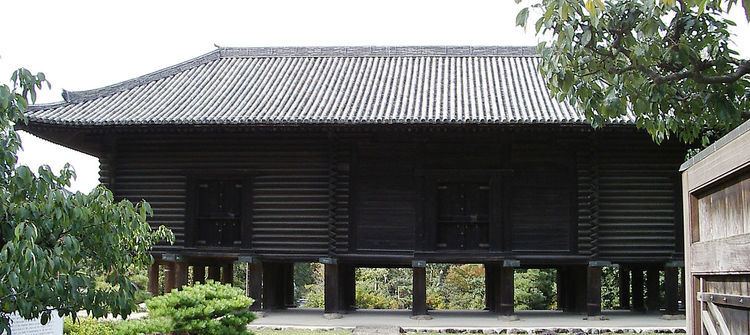Meiwa (明和) was a Japanese era name (年号, nengō, "year name") after Hōreki and before An'ei. This period spanned the years from June 1764 through November 1772. The reigning empress and emperor were Go-Sakuramachi-tennō (後桜町天皇) and Go-Momozono-tennō (後桃園天皇).
1764 Meiwa gannen (明和元年): The era name became Meiwa (meaning "Bright Harmony") because of the enthronement of Empress Go-Sakuramachi.As a cultural phenomenon, the literature of this period records concerted attempts to distill the aggregate characteristics of the inhabitants of Edo (Edokko) into a generalized thumbnail description. These traits (Edokko katagi) were put into use to draw a contrast between Edokko and those who didn't have this "sophisticated" gloss -— those not from the city, as in merchants from the Kyoto-Osaka region or samurai from distant provinces. Sometimes Edokko katagi was presented with pride; and it was used mockingly.
1765 (Meiwa 2): Five-momme coin issued.1766 (Meiwa 3): A planned insurrection to displace the Shogun was thwarted.1768 (Meiwa 5): Five-momme usage halted.1770 (Meiwa 7): A typhoon flattened the newly built Imperial Palace in Kyoto.1770 (Meiwa 7): A great comet (Lexell's Comet) with a very long tale lit up the night skies throughout the summer and autumn.1770 (Meiwa 7): Although no one could have known it at the time, this was the first of 15 consecutive years of drought in Japan.April 1, 1772 (Meiwa 9, 29th day of the 2nd month): "The Great Meiwa Fire"—one of the three greatest Edo fire disasters. Unofficial reports describe a swath of ashes and cinders nearly five miles wide and 15 miles (24 km) long—destroying 178 temples and shrines, 127 daimyo residences, 878 non-official residences, 8705 houses of bannermen, and 628 blocks of merchant dwellings, with estimates of over 6,000 casualties. All this devastation subsequently engendered the staggering costs of reconstruction.August 2, 1772 (Meiwa 9, 4th day of the 6th month): A terrible tempest hit the Kantō bringing floods and ruining crops.August 17, 1772 (Meiwa 9, 19th day of the 6th month): Another storm with more flooding and winds no less intense blew down an estimated 4000 houses in Edo alone.1772 (Meiwa 9): At the time, it was said that "Meiwa 9 is Year of Trouble" because it was marked by an extraordinary succession of natural calamities. The pun was made linking the words "Meiwa" + "ku" (meaning "Meiwa 9") and the sound-alike word "meiwaku" (meaning "misfortune" or "annoyance").1772 (Meiwa 9, 11th month): The nengō was changed to Anei (meaning "eternal tranquillity"), but this symbolic act was proved futile. 
